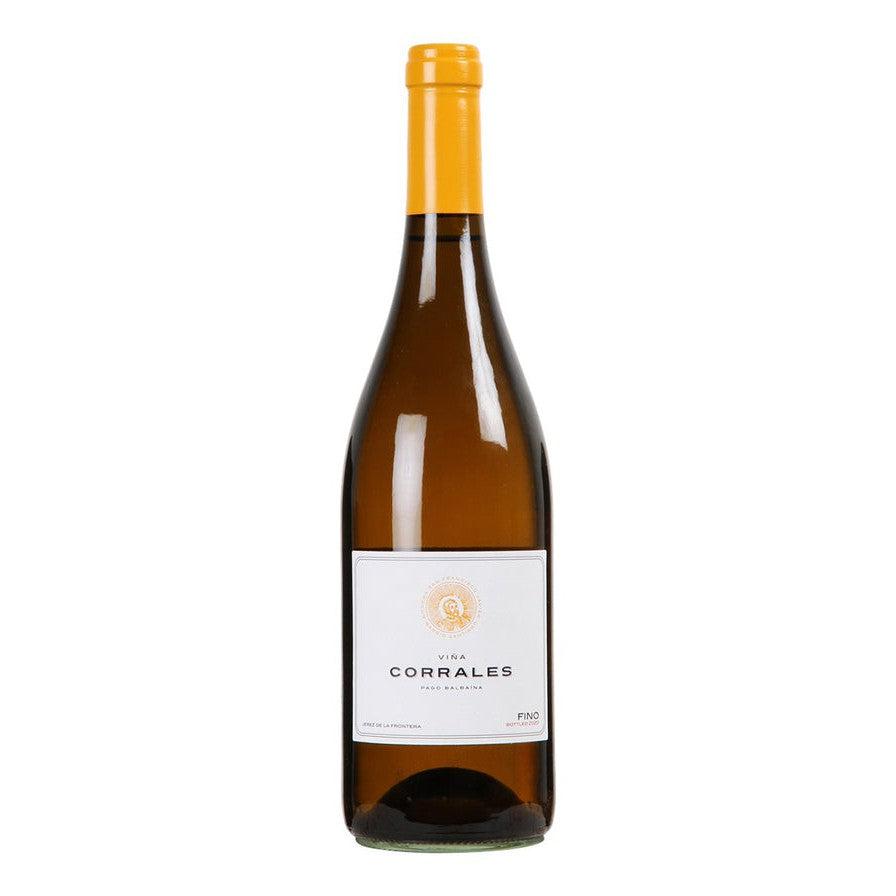Our location
We are located in the heart of Melbourne and stock a range of specialty wines.
We also have access to more than 5000 fine wines from around the world through our local supplier network. Sometimes a vintage changes, or our suppliers sell out of stock without us yet being able to push through a timely update on our website.
If you would like to confirm stock levels before placing your order, please contact us here. Alternatively, if products are unavailable you will be informed in a reasonable time and we will process a refund/replacement for you.
Viña Corrales Fino en rama saca III NV
Free Delivery Orders over $250*
Or $9.95 flat fee Australia wide.
Dispatched from our Melbourne store.
Couldn't load pickup availability
Seen it Cheaper?
Seen it Cheaper?
We strive to offer the best prices on over 5000 wines. If you've seen this product cheaper elsewhere, please message our dedicated price match service line to see if we can do you a better deal.
Vintage Vigilant
Vintage Vigilant
We aim to have all wines be vintage specific. In the case the listed vintage is out of stock and you note you would like that particular vintage, we will inform you via email for approval to go ahead.
Delivery Times
Delivery Times
To be able to supply such a unique & extensive range of boutique wines, we don't hold much of the inventory. So with us, there is the added step of receiving the wine from our local suppliers before it is dispatched to you. Most orders are dispatched within 3-6 working days.
Returns and Warranty
Returns and Warranty
Replacement or refund offered if bottles are faulty or damaged. All our deliveries are insured against loss, however you must notify us in a reasonable amount of time.
- Red Wine
- White Wine
- Rosé Wine
- Champagne & Sparkling
- Dessert, Sherry & Port
 France
France Italy
Italy Spain
Spain Australia
Australia New-Zealand
New-Zealand Germany
Germany Austria
Austria Portugal
Portugal South-Africa
South-Africa Greece
Greece USA
USA
- Wine GiftA great wine gift.
- Green WineA wine made using sustainable, organic and/or biodynamic practices in the vineyard and the winery.
- CollectibleA wine that will improve and possibly increase in value with careful cellaring.
- BoutiqueA wine from a small, artisanal winery.
- Screw CapNo corkscrew required to open.
- Magnum1500ml bottle.
- TWFThe Wine Front
- JHJames Halliday
- WWWorld Wine
- WSWine Spectator
- WEWine Enthusiast
- BHAllen Meadows
- JSJames Suckling
- DEDecanter
- JRJancis Robinson
- STStephen Tanzer
- AGAntonio Galloni/Vinous
- RPRobert Parker/Wine Advocate
- HHHuon Hooke
Description
Description
A fino en rama by Peter Sisseck. Peter is most notably known for his work at Dominio de Pingus, but he found himself in Marco de Jerez. One of Peter’s motivations in entering the wine world of el Marco lay in the fact that it has the world’s oldest continuous vineyard classifications. Even although the big company corruptors have done all they can to erase the signature of the land on its wines over the past 50 years, the pagos remain, known and named for many hundreds of years, if not respected much of late. And, Peter was totally fed up with the corruption and ignorance in his main place of work - Ribera del Duero.
Peter’s extremely neat rendition of how Finos grow in relation to flor – the wine lives between the velo de flor (live yeast) atop it, and the cabezuelas (spent yeast lees) underneath. The live yeast atop the barrel eats glycerol, acetic acid and alcohol, reducing volume in the mouth, rendering the wine’s bony skeletal edge (and imparting its floral scent). The dead yeast lees which sediment the floor of the barrel give back coating mouthfeel and texture. The cabezuelas are particularly deep in the Bodega San Francisco solera, adding heaps of mouthfeel and texture. Peter feels that these days the cabezuelas are disrespected and little understood, but represent the real wealth of fine old solerajes.
Peter plans an annual saca (removal of wine from barrel – sacar is to take) every spring, only taking about 80 litres per bota.
Lemon rind, dandelion, thyme balm, melon tendril, persimmon, straw, parmesan rind on the nose. The mouth’s flavoured with deep chalk, iodine, scents of a rockpool, with a hit of spice to finish - white pepper and anise. It’s gently graduated, the spice rolls beautifully, a hit of feijoa bitters is relieved by talcy tannin and acid twines in gently towards the end. It’s a wine of slow, profound reveal and resolve; there’s great clarity of purpose and journey, without force and it’s deceptively easy for a wine of considerable power.
| Type | Dessert, Sherry & Port |
|---|---|
| Varietal(s) | Palomino |
| Country | Spain |
| Region | Jerez |
| Brand | Viña Corrales |
Wines of Spain

With 2.9 million acres of land planted in wine grapes, Spain is the most widely planted wine producing nation and second largest producer in the world. Many styles of wine are produced in the country most of which are based on native grape varietals.
The two most famous regions are Rioja and Ribera del Duero for their Tempranillo production. Rioja Tempranillo (the classic) will be lighter and fresher with red fruit flavours as compared to those from Ribera del Duero that are often deep purple, higher in alcohol with more tannins and intense black fruit character. Rioja is also known for producing Garnacha (Grenache), as well as rich, nutty whites from the indigenous Viura varietal.
In the Catalonia region, Spain is recognized for making a sparkling wine in the traditional method but using native grape varieties. This is called Cava. Priorat, a subregion within Catalonia specializes in making still red blends of Garnacha, Carignan and often Syrah and Cabernet Sauvignon in a bold and full-bodied style. Together with Rioja, wines from Priorat have achieved DOCa/DOQ status signifying their quality.
Sherry is Spain’s famous fortified wine which can either be completely dry, lusciously sweet or somewhere in between. This is made in the southern region of Jerez.
Other notable Spanish wine styles include: Monastrell (AKA. Mataro/Mourvèdre), produced in the Jumilla region and refreshing white Albariño and Verdejo from north western Galacia.




